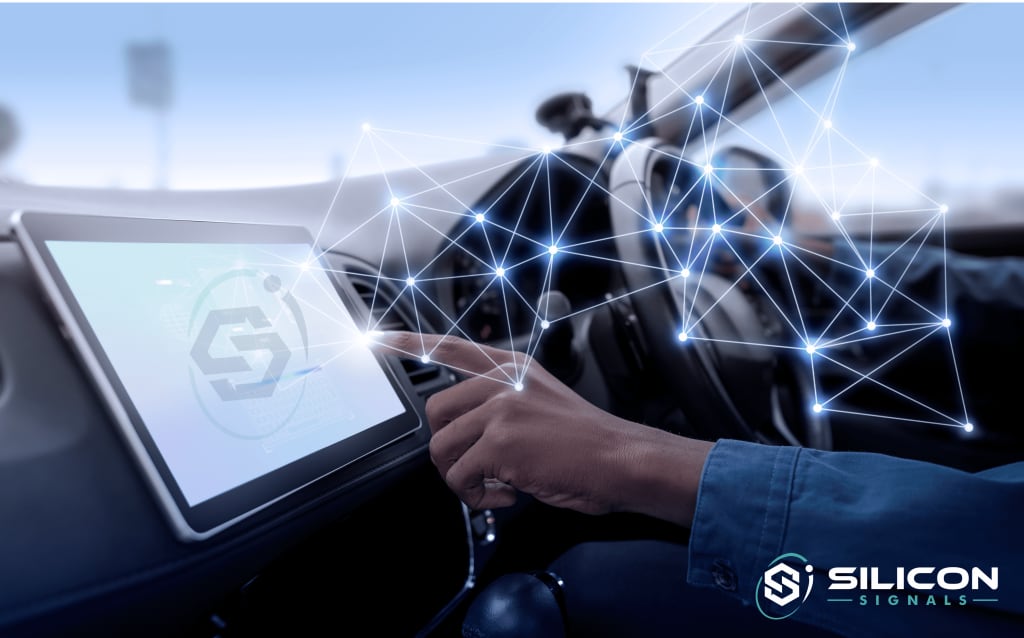Driving Experiences Made Seamless with OTA Automotive Software: Transforming Vehicle Updates
OTA Automotive Software

In the quickly changing automotive industry of today, cars are more than just mechanical devices. They have evolved into intelligent, networked devices that redefine comfort, safety, and luxury. Updates to firmware and software are now necessary due to the increasing complexity of software-driven systems in modern cars. But once the car is on the road, it can be difficult and time-consuming to apply these updates. In order to minimize reliance, cut expenses, and provide wireless updates for an improved driving experience, Over-The-Air (OTA) automotive software and firmware updates are useful in this situation.
Why OTA Updates Are Important: For optimal driving performance and dependability, software and firmware must be kept up to date. Not only do traditional methods of updating software require driving back to the service station, but they also cause inconvenience to car owners and increase costs. By wirelessly updating the firmware and software via a cellular network, an internal gateway (OTA Manager), and the corresponding Electronic Control Units (ECUs) found in all modern cars, OTA updates offer a seamless solution. Vehicles can maintain bug fixes, security updates, and new iterations by implementing OTA updates, which guarantees a seamless and secure driving experience.
Parts Necessary for Over-the-Air Updates: Three main parts are needed to implement OTA updates: a head unit or OTA Manager; an open-source backend server; and secure communication channels. Firmware and software images that are pushed to the vehicle's ECUs are created and deployed by the backend server. It compiles pictures from various sources and merges them into a single, cohesive image. In order to prevent security breaches, secure communication channels are crucial for safeguarding data transmission and reception. By sending requests to the backend server and confirming the legitimacy of software/firmware updates, the head unit, also known as the OTA Manager, which is made up of several ECUs, streamlines the update process.
Forward-Looking Trends in OTA Automotive Updates:
1. Quantum-secure encryption: By utilizing the unpredictable nature of quantum particles, the automotive industry is investigating quantum-secure encryption as a means of strengthening the security of over-the-air (OTA) updates.
2. Holographic User Experience: Automakers are experimenting with holographic interfaces to provide drivers with a futuristic, hands-free, and immersive way to interact with updates.
3. Self-Replicating OTA Bots: Astute, self-replicating bots take charge of the update process on their own, guaranteeing accurate and timely updates while always learning for improved performance in the future.
4. Cosmic Connection Redundancy: To guarantee successful updates in places with poor connectivity, vehicles are investigating cosmic rays as a backup communication channel.
5. AI-Optimized Timing: To minimize disruptions and improve the update experience, artificial intelligence algorithms examine usage patterns to identify the best time for updates.
6. Ethical Data Privacy Guardians: OTA updates come with ethical data privacy guardians who make sure user consent is honored and data is anonymized, building trust between drivers and their cars.
7. Fusion Testing Laboratories: To ensure robustness and resilience even in the most hostile environments, OTA updates are put through rigorous fusion testing.
8. Bio-Metric Personalization: Autos that have biometric sensors installed identify each driver's distinct traits and modify settings and features to provide a customized driving experience.
9. Multiverse Compatibility: OTA updates are designed to work flawlessly with a variety of software versions and vehicle models, guaranteeing that every vehicle gets the most recent version.
10. Hyper-Holographic Regulatory Liaisons: By bridging the gap between the digital and physical worlds, hyper-holographic liaisons make sure OTA updates adhere to emissions and safety regulations.
Conclusion: OTA automotive software and firmware updates have revolutionized the way vehicles stay up to date with bug fixes, security updates, and new iterations. By implementing OTA updates, car owners can enjoy a seamless driving experience without the inconvenience of visiting service stations. As the automotive industry embraces quantum-secure encryption, holographic interfaces, self-replicating bots, AI optimization, and other forward-looking trends, the future of automotive innovation is set to surpass expectations and create a driving experience like no other.
About the Creator
Enjoyed the story? Support the Creator.
Subscribe for free to receive all their stories in your feed. You could also pledge your support or give them a one-off tip, letting them know you appreciate their work.





Comments (1)
Fantastic work.